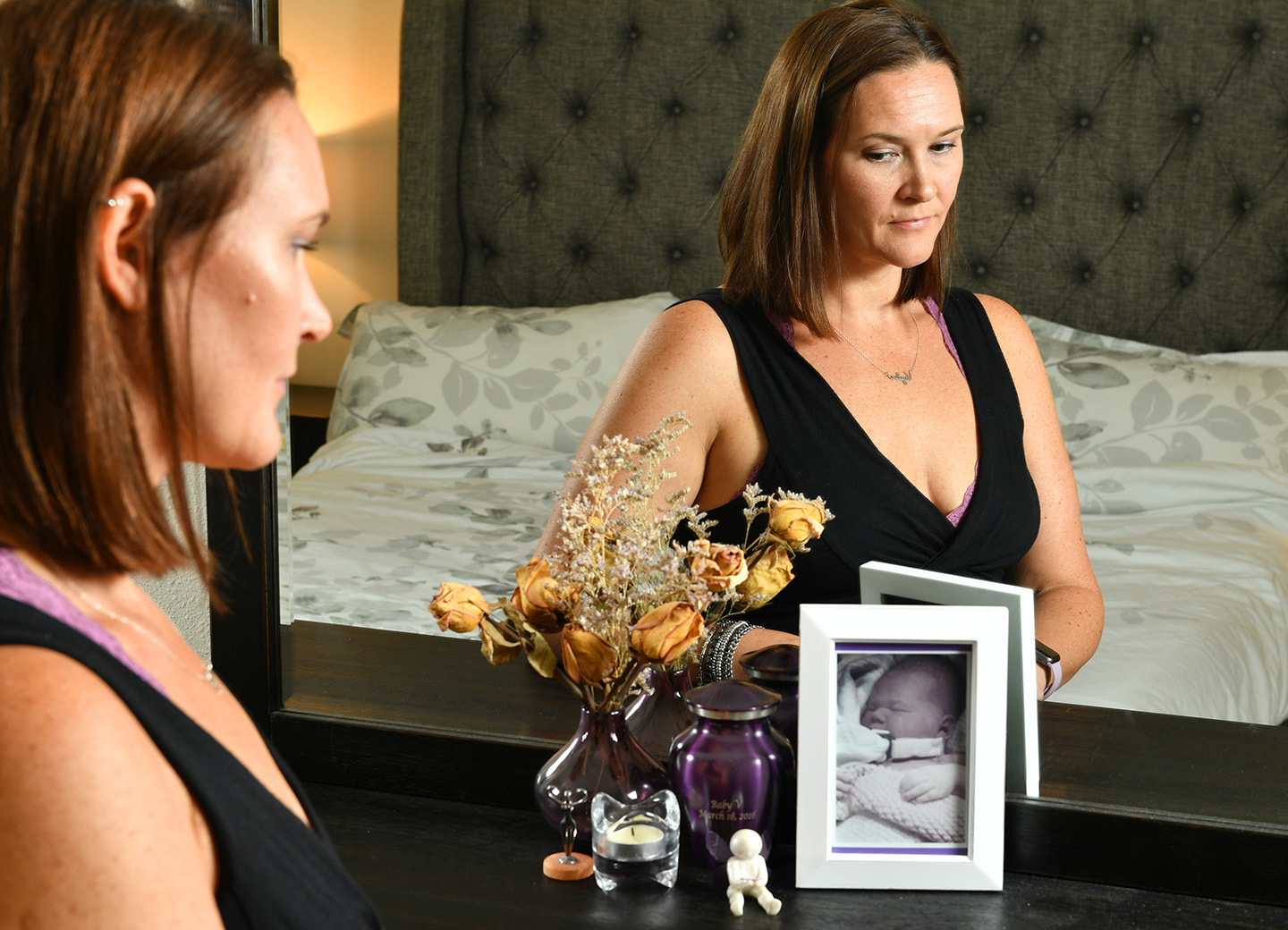
Two weeks overdue, Riva Majewski had been laboring for more than 30 hours in her Sarasota condo.
She started from an inflatable pool in the living room then moved to the bed. She tried pressing her knees to her chest. She went down on all fours. She pushed from the toilet, taking breaks to vomit then shower off.
As she crowned, the baby’s head turtled in and out, her umbilical cord wrapped around her neck. But midwives leading the home birth let the first-time mother continue without calling emergency responders for help.
When they finally pulled out the baby girl, she was blue and limp. She never took a breath.
“I tried to tell them, ‘She’s stuck! She’s stuck!’” Majewski said. “I was just pushing and pushing. Nobody was guiding me.”
More expectant mothers like Majewski are turning to out-of-hospital deliveries in Florida. They are part of a growing national movement that rejects the sterile environment of maternity wards, where cesarean section rates have ballooned and powerful drugs are overprescribed.
Nowhere in Florida is the trend more pronounced than Sarasota. The county’s out-of-hospital birth rate is more than double the statewide average.
Its popularity comes at a cost.
Sarasota’s two freestanding birth centers — Rosemary Birthing Home and Birthways Family Birth Center — called 911 for more emergency transfers than almost anywhere else in Florida.
During the past three years, one-third of local home and birth center deliveries ended at the hospital.
The emergencies prompted paramedics to change how they respond to calls from birth centers, while distraught staff at Sarasota Memorial Hospital began tracking the transfers themselves.
“Many of these women have been in labor for three or four days,” said John Abu, a physician who heads Sarasota Memorial’s emergency obstetrics. “They’re exhausted. They’re terrified. They have a fever and higher rate of infection.”
In their defense, Sarasota’s two birth centers pointed to the hundreds of babies they’ve delivered through the years. Midwives acknowledged tensions with local first responders, but blamed the hostility on paramedics and doctors.
The midwife overseeing Majewski’s home birth did not respond to three calls seeking comment.
Rosemary’s owner also declined to comment on the details of Majewski’s delivery, citing federal patient privacy laws. But she said she felt heartbroken for the grieving family.
“I can’t imagine a more horrendous thing to live through as a parent, and it’s a pretty terrible thing to go through as a business owner,” said Harmony Miller, licensed midwife and owner of Rosemary. “There are bad outcomes that happen in every setting, in hospitals especially — and it’s terrible for everyone.”
The area’s licensed midwives now meet regularly with hospital providers, and both sides hope that will translate to better patient care.
But those same midwives never warned Majewski, who provided her birth records to the Herald-Tribune, about the potential risks associated with her weight, she said. They did not report Majewski and her baby’s hospital transfers to the state as required. And even when fatalities were known, midwives escaped serious punishment, records show.
“A lot of people think, ‘I want to have a natural childbirth, or a birth at home, for sentimental reasons,’ but it couldn’t be more dangerous,” said David Best, a personal injury lawyer who specializes in infant death cases. “A cab driver could deliver a baby with no complications and so could I. The problem comes when something unexpected goes wrong.”
When Majewski and her husband, Filip, learned they were expecting their first child, the couple knew they wanted a home birth — the way Majewski’s mother brought her into the world some three decades earlier.
A close friend from high school had just delivered her son at home, and everything Majewski remembers reading about the experience seemed positive.
Meanwhile, the local hospital was working to reduce unnecessary C-sections .
In 2007, obstetricians at Sarasota Memorial performed C-sections on 40 percent of first-time mothers. Just three Florida counties had a higher rate that year, and Sarasota was among the highest 5 percent in the nation, according to data from the U.S. Centers for Disease Control and Prevention.
C-sections slice through a woman’s abdomen, fatty tissue and uterine wall, leaving a scar that varies in size and placement depending on the method. The procedure can lead to higher risks of infection, hemorrhage and blood clots.
“It’s not a complicated surgery, but every surgery has risks,” said William Sappenfield, a professor of public health at the University of South Florida and director of the Florida Perinatal Quality Collaborative. “And in Florida, when you have 220,000 of these a year, the risks add up.”
The university is working with 45 of Florida’s 115 delivery hospitals, including Sarasota Memorial, to reduce unnecessary C-sections. The goal is for a statewide rate of less than 24 percent — and some believe it should be lower.
“We see this as an opportunity for prevention,” Sappenfield said. “Most hospitals did not follow patient guidelines for when a C-section should take place.”
By 2016, Sarasota Memorial had reduced its C-section rate to the state’s third lowest.
But Majewski and others like her already were unnerved.
“You have that in your head when you’re looking at home births versus hospitals,” Majewski said. “Nobody wants an unnecessary C-section. Everyone wants a beautiful water birth.”
She toured the hospital and both local birth centers, choosing Rosemary for its charm. The two-story wood cottage sits near downtown with two queen beds for deliveries set to soft music, a soaking tub for water births with white Christmas lights strung overhead and ambient art of pregnant women.
It was there Majewski had her prenatal classes, even though the birth would take place at home.
“It was very tranquil,” she said. “Unlike a cold, sterile, hospital room.”

The Rosemary Birthing Home in Sarasota has two queen beds for deliveries set to soft music, a soaking tub for water births and ambient art of pregnant women. | Herald-Tribune staff photo | Mike Lang
Licensed midwives at the facility talked about what to expect during childbirth, how to breathe and tips for a natural delivery. They encouraged Majewski to read books from authors like Ina May Gaskin — considered the godmother of midwives.
“They make it seem like birth is just so easy,” Majewski said. “They make you feel very comfortable, very warm and inviting. They make it seem like doctors are bad guys because they’re out to control your birth and give you an unnecessary C-section. They tell you it will be on your terms — that it is your baby and your delivery.”
Majewski’s due date was penciled in for early March 2016.
The couple surprised family with pink balloons, decorated their nursery for a girl and hung a small stocking for her at Christmas. They also chose a name but kept it secret. To most, their daughter, Vayden, would be known only as Baby V.
Majewski remembers calling the birth center around 9:30 p.m. on Tuesday, March 15.
She’d experienced contractions for 24 hours and was going into more active labor. The midwife told her to drink a glass of wine, take magnesium and relax.
At 3 a.m., Majewski called back, this time demanding help.
The midwife on call — Ivy Nicole Hummon — arrived at Majewski’s condo an hour and 15 minutes later with an oxygen tank, scissors and a laptop. Majewski already was in the tub, worn out from throwing up coconut water and vitamin C supplement drinks.
Hummon typed notes on the computer, while Jilanne German, a student midwife assisting with the delivery, ran vitals. Majewski had met Hummon just one other time. She did not know German at all.
Majewski labored from different positions, moving from the tub to the bed to the toilet to the shower. More than three hours passed before the midwives checked her cervix, she told police.
By 9 a.m., Majewski was still pushing through the exhaustion. Licensed midwives cannot prescribe medicine, but they inserted Arnica homeopathic herbal supplements into her rectum to try to control the pain and swelling.
“I thought she was dying,” Filip Majewski said. “I thought I was going to lose her.”
“I never saw a person suffer so much, like my wife did that night.”
At 12:19 p.m., the midwives could no longer hear the baby’s heartbeat on their handheld monitor, according to a time sequence recorded in the midwife’s notes.
They tried again at 12:24 p.m.
And again at 12:42 p.m.
Just static.
“There was no sense of urgency,” Filip Majewski said.
At 12:49 p.m., Majewski pushed out the baby’s head. It was blue. Her shoulders were still stuck in the birth canal.
At 12:51 p.m., Hummon asked Majewski’s best friend to call 911 — more than four hours after signs of distress and 32 minutes after losing the baby’s heartbeat.
By 12:53 p.m., Hummon used her scissors for an episiotomy — a surgical cut made at the opening of the vagina to create more room for the delivery.
It took three cuts to get Baby Vayden’s arms out.
“They just ripped the baby out,” Filip Majewski said. “They butchered her.”
Vayden was stillborn at 12:57 p.m.
“The panic I saw in her eyes, and her shaking hands,” Filip Majewski said of the midwife. “You could see the fear because it was already too late.”
Within minutes, EMS crews arrived and took over CPR. They rushed Baby Vayden to the hospital — about two and a half miles away — where she was pronounced dead.
“Just as we were welcoming our beautiful, most perfect baby girl into the world, we unexpectedly had to say goodbye,” Majewski wrote to her friends in a post on Facebook two days later. “Our hearts are shattered. I cannot even attempt to know how to deal with the tragic loss of my precious daughter.”
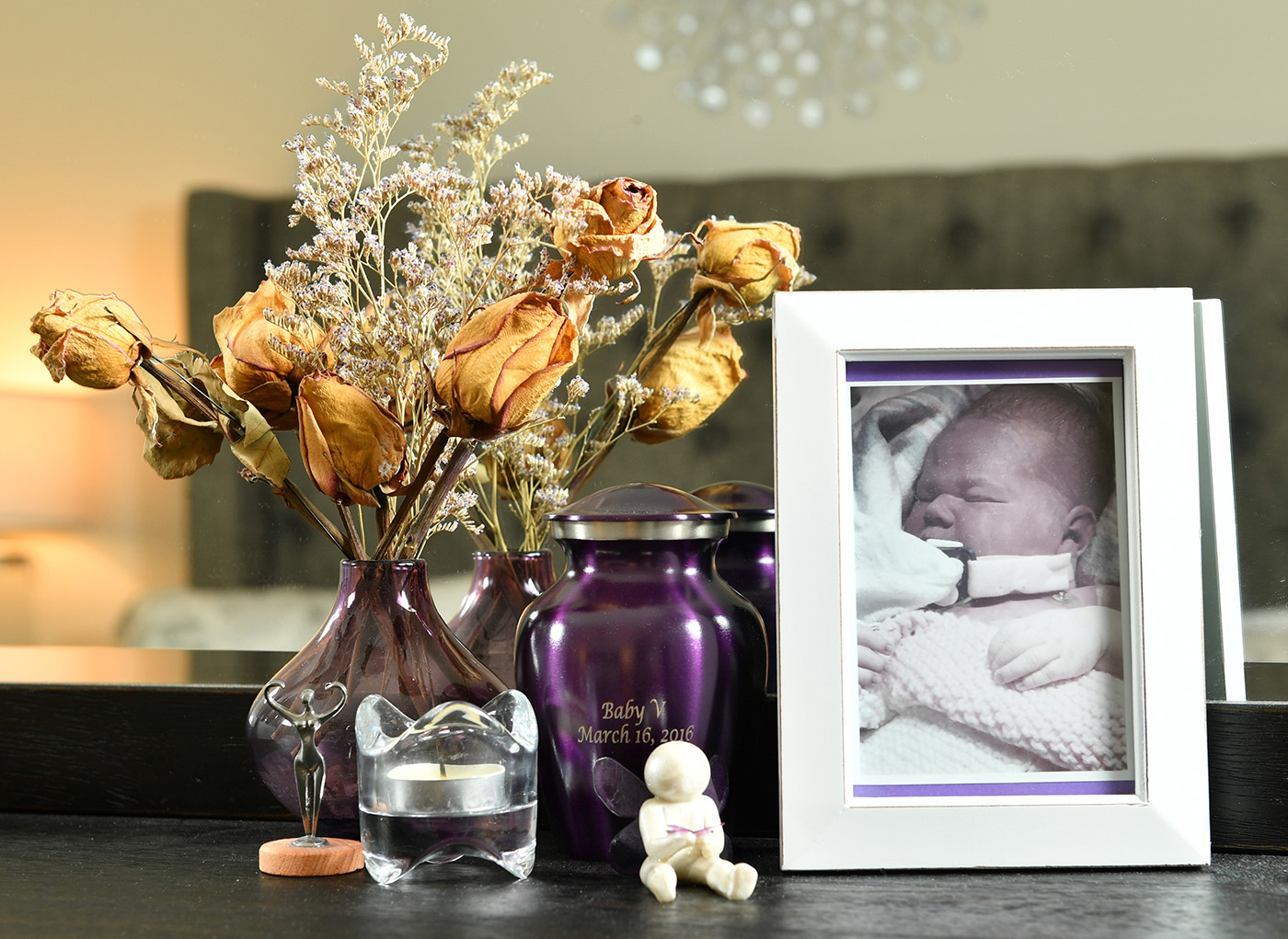
The standard of care is high for expectant mothers in the United States. But each year, about 24,000 babies — like Vayden — are stillborn.
A GateHouse Media analysis of public health data shows the risk of a stillbirth in Florida climbs outside the hospital.
There were 1.3 full-term stillbirths for every 1,000 hospital deliveries in Florida during the past decade.
With birth centers and home births, that jumps by more than 50 percent.
And because that doesn’t include stillbirths that started as planned home births before a hospital transfer, experts say the true risks are even greater.
“Women want their wedding day to be something specific — they have this vision,” said Kyle Garner, a physician with Gulf Coast Obstetrics and Gynecology in Sarasota. “They want their birth experience to be the same. When they don’t get that, they feel like it was robbed from them by this physician. They just hate it. The problem is the pendulum has swung too far to the other side … a group of midwives who say you’re in charge, you can do this, and beat the drums of women power along the way.”
“If you want an all-natural experience, go to the backyard and dig your birth trench,” Garner said. “But with that, you must expect that it takes you to the realm of childbirth where many more babies die.”
Doctors diagnosed Vayden with shoulder dystocia — when a baby’s head is delivered, but the shoulders remain stuck.
It is more common with larger babies — and a leading reason for C-sections.
“A lot of the bigger babies are having shoulder dystocia,” said Brandy Thomas, a certified nurse midwife with Gulf Coast Obstetrics and Gynecology. “Everyone is gaining weight and our population is more high-risk.”
Majewski struggled with a thyroid issue and gained 30 pounds during pregnancy. At the time of the delivery — 41 weeks and six days — she was more than 250 pounds and puffy all over, with swollen legs and ankles.
Rosemary’s owner says she uses a point system to monitor risk factors consistent with state guidelines and that obesity alone would not score someone out of having a home birth — especially since Majewski did not develop signs of gestational diabetes .
The midwives never warned Majewski that her weight could increase the odds of shoulder dystocia or any other complication, she said. They scheduled an ultrasound near her 20th week of pregnancy to learn the gender but no testing closer to the due-date. Majewski’s midwives did not know the size of the fetus, police records show.
Vayden weighed 10 pounds and nine ounces.
Looking back, Majewski believes it was evident she needed a hospital delivery all along.
She also learned she’d been stuck with shoulder dystocia herself — tainting her inspiration for a home birth in the first place.
“My baby was huge, and my baby was stuck,” Majewski said. “They didn’t know that.”
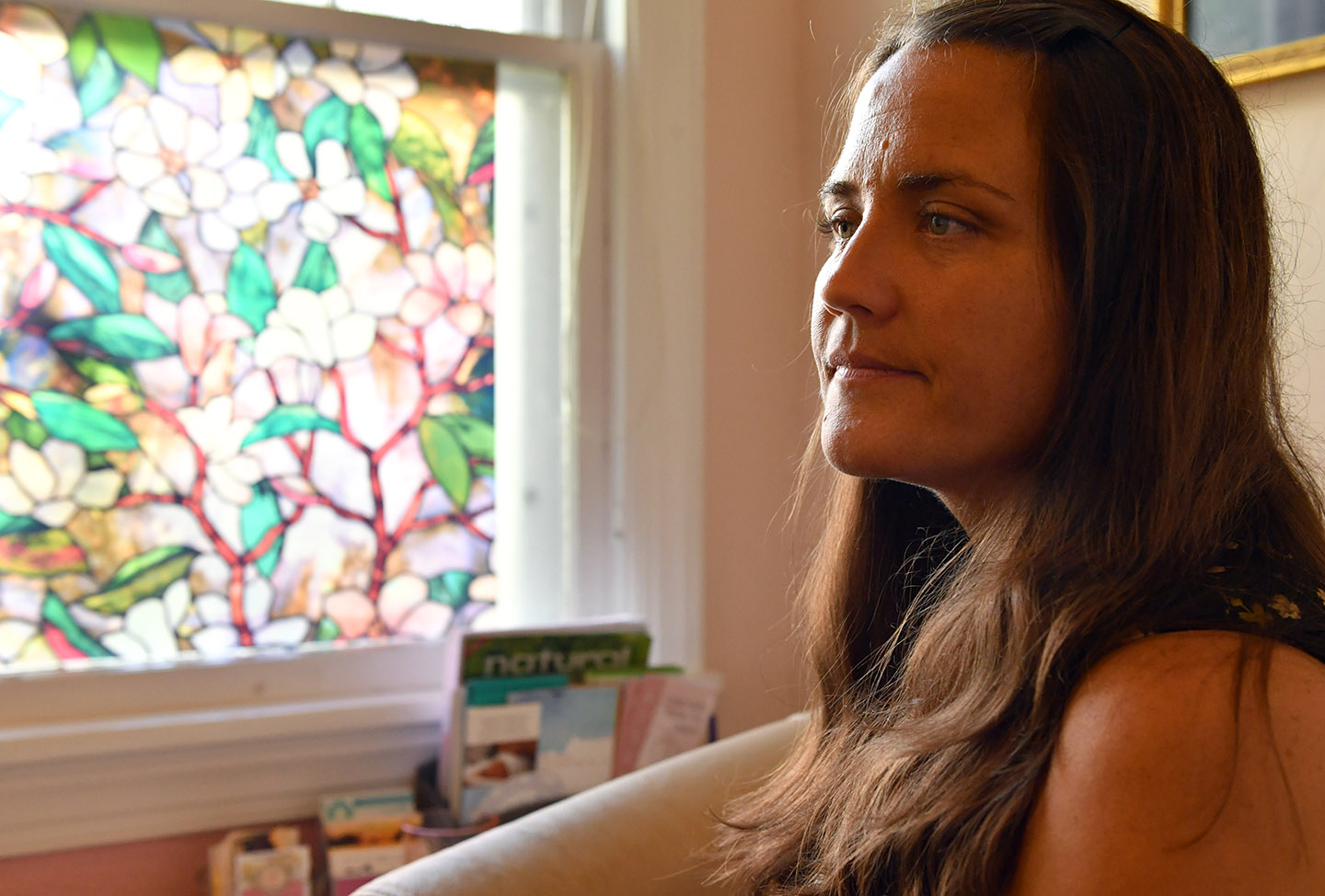
Licensed midwife Harmony Miller has operated Rosemary since February 2007.
The 1,888-square-foot house, eight decades old, sits next to a yoga studio, holistic clinic and acupuncturist’s office in a downtown enclave adjacent to the Salvation Army Center of Hope, the city's primary homeless shelter. Police are a common sight in the area — mostly dealing with the sorts of petty crime that stem from homelessness such as open-container violations.
It also was a busy address for emergency medical responders.
A Herald-Tribune analysis of 911 calls found just one Florida county experienced more birth center emergencies than Sarasota.
The newspaper obtained a decade's worth of 911 calls from the addresses of Florida’s 44 active and recently shuttered birth centers to build a statewide database.
Those records show that since 2008, Rosemary called 911 to request an ambulance for a medical emergency 30 times. That number does not include the home births that take place at a client’s house — just deliveries at the birth center itself.
Birthways in Sarasota called 911 for a medical emergency 76 times. Only two birth centers in Florida called for help more often.
The 106 emergency calls in Sarasota were more than those from the birth centers in Miami-Dade, Palm Beach and Orange counties combined.
It reached the point where hospital nurses began tracking the numbers themselves and organized meetings with midwives to better coordinate transfers.
Sarasota Memorial also introduced its hospitalist program, which makes obstetricians available around the clock to examine patients, handle emergencies and oversee deliveries for women who do not have their own physician. The hospital even equipped some rooms with a whirlpool tub for laboring.
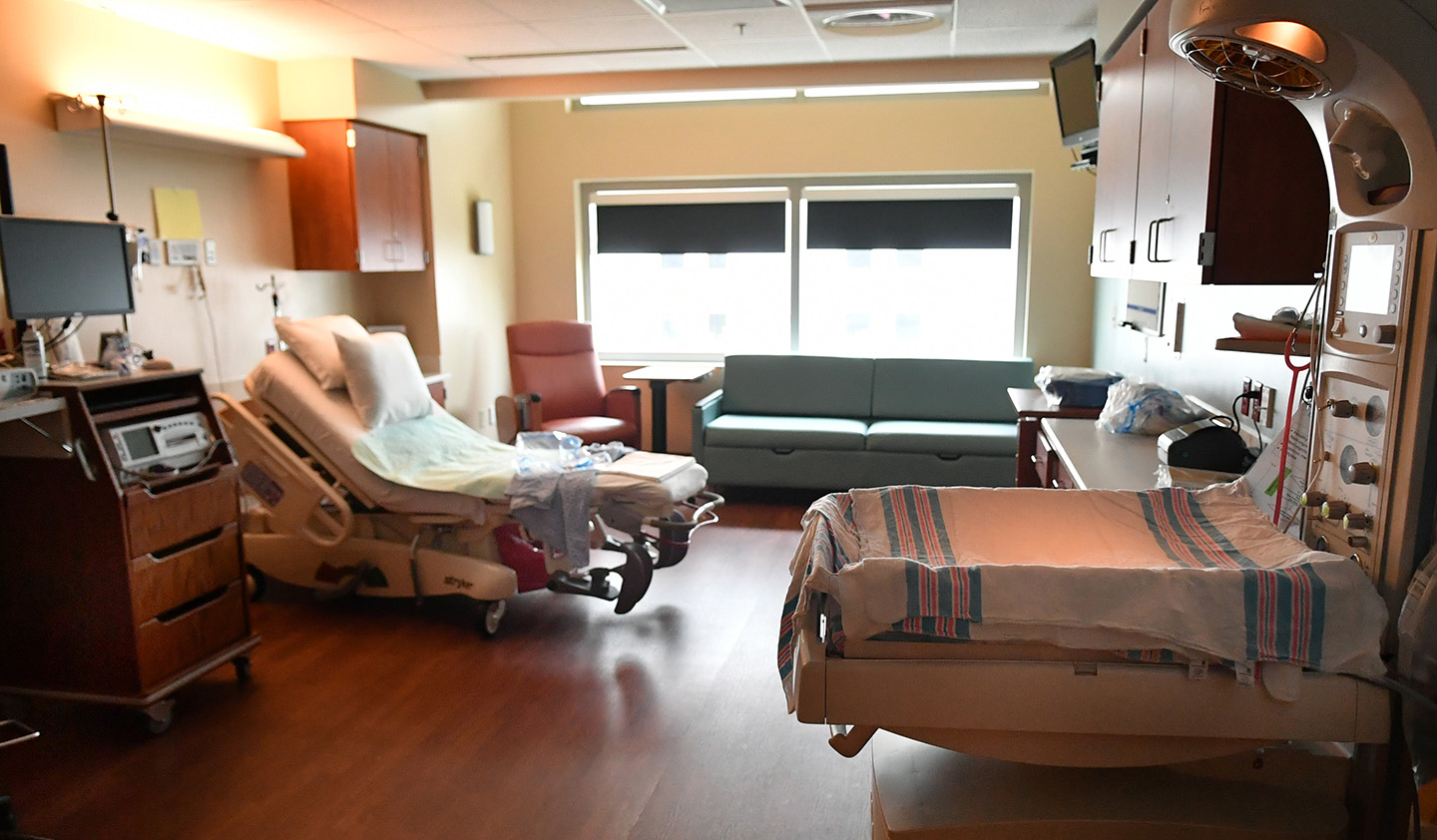
“We see a fair amount” of patients from birth centers, said Judy Cavallaro, nurse manager of the hospital’s emergency obstetrics, labor delivery and mother-baby units. “Some outcomes have been good; some haven’t been so good.”
Not all birth center emergencies ended at the hospital — some meant ambulances idling in the parking lot. Midwives were calling 911, and requesting paramedics to wait, while they tried to handle it themselves.
But that isn’t how 911 works.
Emergency responders cannot sit around waiting for a potential crisis. That takes an ambulance crew out of service and racks up costs for taxpayers, said Sarasota County Fire and EMS Chief Michael Regnier.
“They were dialing 911 when there was a delivery, and what they wanted to do was for us to wait ahead of time — and do a staging situation,” Regnier said. “We have a lot of emergencies around Sarasota County, and we need to make sure we’re able to respond. We can’t be there on standby.”
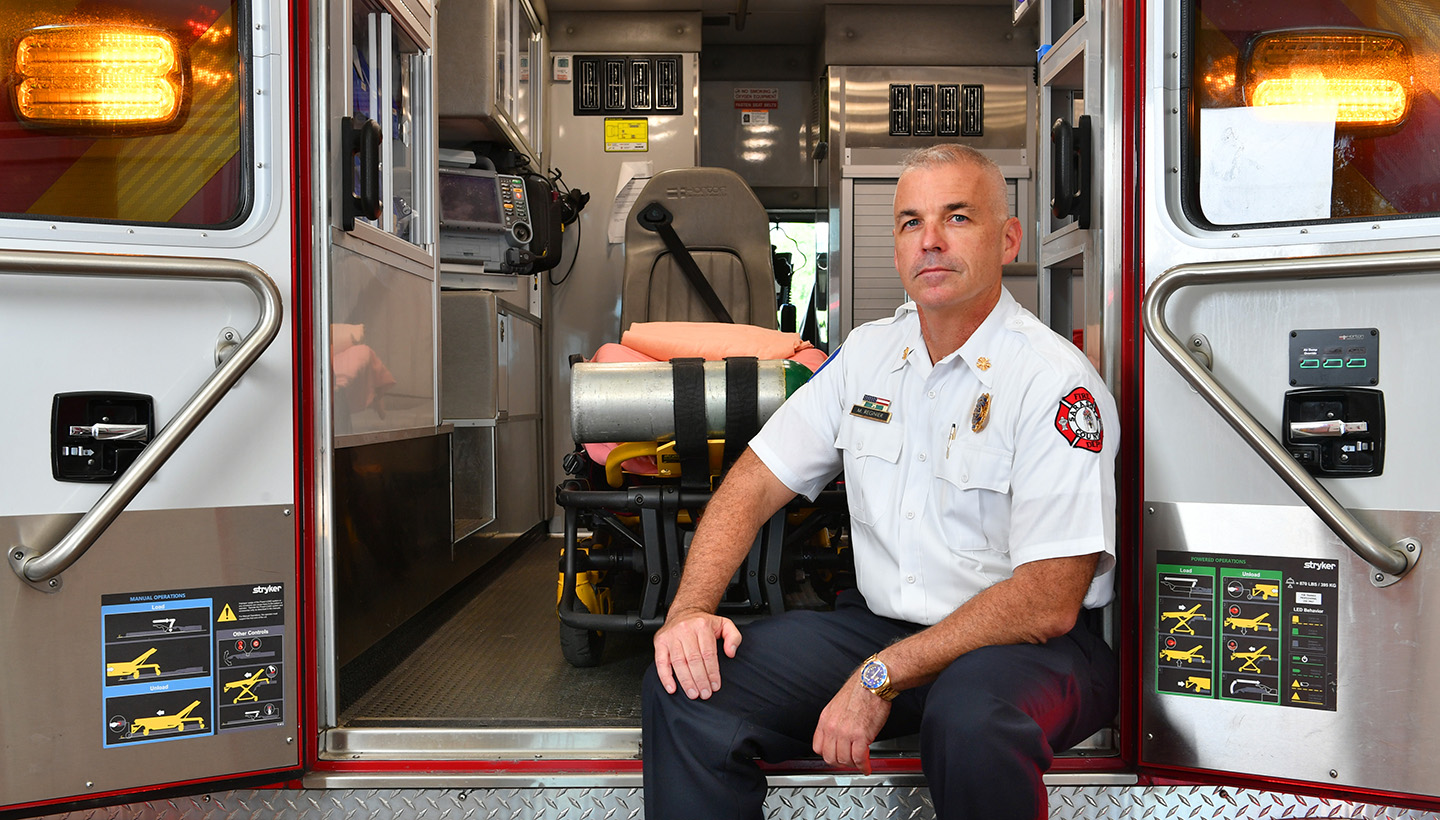
In February 2014, EMS medics were forced to wait for 56 minutes at Birthways, while midwives tried to resuscitate a baby with neonatal apnea. The baby spent nine days in the hospital, state transfer records show.
Later that year, an ambulance crew waited 28 minutes after responding to one call to Rosemary. After another call in 2015, emergency responders waited at Rosemary for 26 minutes, according to a review of hospital transfers.
In response to the incidents, a battalion chief marked the file for Birthways with a mandate for paramedics to call the on-duty EMS captain during any response there, noting “disputes” that occurred between midwives and first responders in the past. Emergency officials also created new protocols to address the issue .
Birthways owner Christina Holmes said she’s never sent away an emergency medical technician. But she admits to having made them wait. She says that because she’s more qualified than paramedics when it comes to infant rescue.
“There are times you need to wait before you move a patient for a transfer,” Holmes said. “EMTs do not know about labor and birth. They’re not trained in neonatal resuscitation. They don’t know how to do it.”
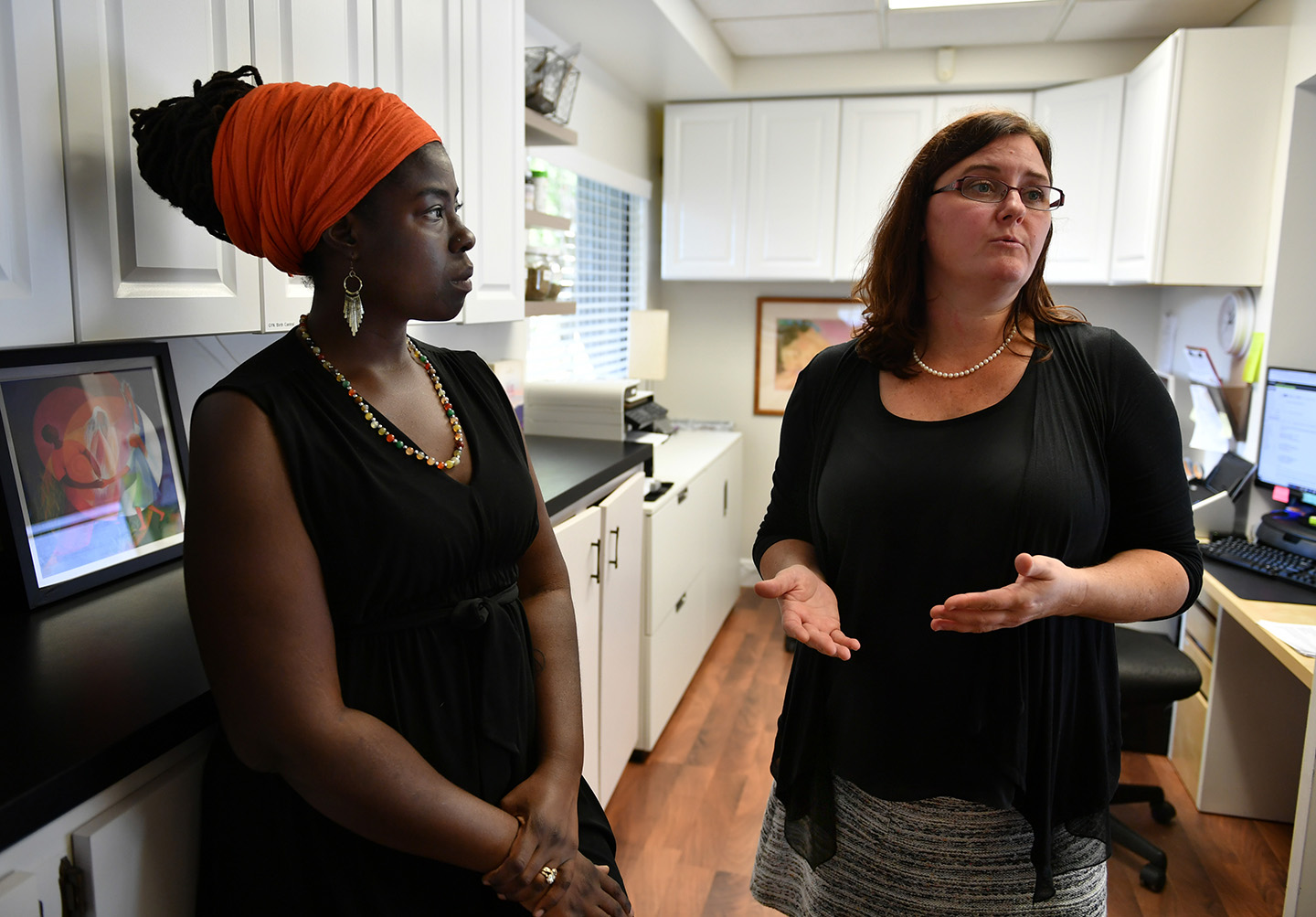
The owner of Rosemary echoed those statements.
“Sometimes there’s confusion,” Miller said of paramedics. “For a lot of them, it’s kind of scary arriving to a birth outside a hospital setting.”
The fire chief pointed to his staff’s training, which includes infant life-support and neonatal resuscitation from the American Heart Association.
The county’s ambulances are equipped with heart defibrillators, EKG machines, advanced airway controlling instruments and intravenous access devices — lifesaving tools not available at most birth centers.
“Our personnel receive specialized hands-on training for obstetrics, neonatal care and pediatric emergencies,” Regnier said. “This training includes difficult pregnancies, labor and delivery complications and neonatal resuscitation.”
At the hospital, it took doctors more than two hours to stitch Majewski back together.
And before she could see her daughter, two detectives wanted to know what happened. The fire department called them to report a suspicious death.
“They were concerned with the situation,” Sarasota Police Det. Megan Buck said.
Police took statements from the grieving family, interviewed the midwives and filed a two-paragraph incident report . There was no arrest, and prosecutors decided not to pursue any criminal charges.
Several times during her interviews with midwives, Det. Buck said she did not believe there was criminal intent.
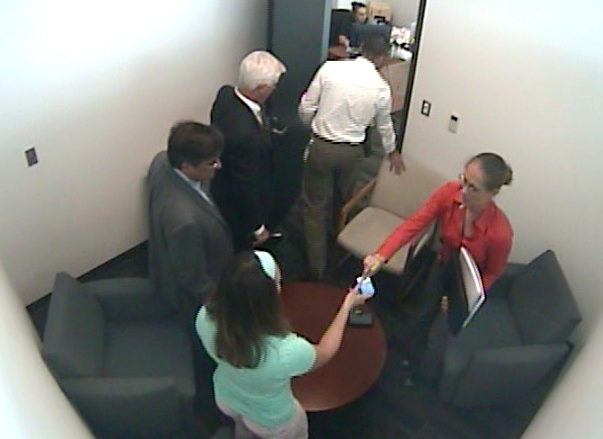
SPD declined interview requests for this story. Police spokeswoman Genevieve Judge wrote in an email statement that “these are serious cases that are handled as any death investigation would be.”
After the tragedy, a counselor for the Healthy Start Coalition of Sarasota County also interviewed Majewski. The agency reviews all infant deaths, stillbirths and cases of Sudden Infant Death Syndrome. The information is used to make recommendations for programs, but no blame is assigned.
“It’s always really sad when someone loses a baby — it’s just a very difficult thing,” said Anne Muir, a coordinator with Healthy Start. “These things are really tragic. Births outside hospitals are risky.”
With nowhere else to turn, Majewski tried to bring her fight to court.
She met with personal injury lawyer Douglas Burnetti. But the attorney wouldn’t take her case.
Florida law requires that midwives keep just $100,000 worth of risk insurance — and medical malpractice lawsuits are expensive.
“Any medical malpractice case involves a lot of costs and a lot of time,” Burnetti said. “One hundred thousand dollars is just not enough … You can’t justify that — not only as a lawyer — but you can’t justify that to the client.”
As with many of the home-birth tragedies nationwide — where midwives skirt responsibility by blaming the mother — Majewski faced accusations from Hummon.
The midwife claimed in her delivery notes that Majewski and her husband balked at the suggestion of a hospital transfer amid the first signs of distress. She gave the same account to police.
“She’d been laboring and had gotten this far,” Hummon said during a videotaped interview at police headquarters. “She wanted to keep going.”
But Majewski and her husband say no such conversation occurred.
Shelly Johnson, a close friend who was present for the home birth and called 911, also said neither the midwife nor the student mentioned the idea of a hospital transfer until it was too late.
Police never asked Majewski about the midwife’s claims. And they never interviewed Johnson.
“Nobody said anything about going to the hospital,” Johnson said. “I even brought it up … I asked her if this is normal. It seemed like it had been going for a long time. You could tell Riva was getting tired. She was exhausted. They said it was totally normal.”
“There was never ever any kind of concern,” Johnson said. “They were just so lackadaisical.”
It was not Hummon’s first problematic delivery.
Regulators with the Florida Department of Health ordered Hummon to a year of licensure probation in April 2014 over poor patient care.
According to the complaint, Hummon did not record a vaginal examination of her patient, failed to check fetal heart tones and didn't consult with a physician when a mother struggled to deliver her placenta. She also administered opioid pain narcotics and antihistamines without proper prescriptions.
Along with probation, Hummon was issued a reprimand, fined $1,000 and required to complete a birth emergency skills training workshop.
Hummon was not employed by Rosemary at the time of the incident, but worked there through most of her probationary period.
As a midwifery student, Hummon trained under Holmes at Birthways in Sarasota. Holmes told the Herald-Tribune that she had frequent problems with Hummon’s care, and when Hummon obtained her license, Holmes says she refused to hire her former student. She said she would not have Hummon oversee her own birth.
After Baby V’s death, Hummon and Rosemary decided to part ways. Hummon continues practicing in the area through her Englewood home birth business. She did not respond to calls seeking comment for this story.
“I come in, and from what they think, kill their baby,” Hummon told police. “That’s not me. I care deeply about my job.”
Jilanne German, the student midwife helping with Majewski’s delivery, also has a troubling history.
A Naples couple sued German in 2017 over allegations that the apprentice midwife burned a baby with scalding hot water during a postpartum check, leaving lifelong injuries.
German could not be reached for comment. In a court filing, she denied the allegations from the Naples lawsuit.
Midwives at Rosemary told Majewski that hospital transfers for emergencies were rare.
But a review of state records shows the birth center reported one transfer for every three successful deliveries.
The Herald-Tribune filed a public records request with Florida’s Agency for Healthcare Administration for the annual reports submitted by every birth center over the past decade.
Those records show that since 2007, licensed midwives at Rosemary delivered 396 babies inside the birth center. They called for a transfer 130 times.
In February 2013, midwives at Rosemary reported to the state that a mom by the initials M.B. was transferred to the hospital after laboring 27 hours and failing to progress.
When doctors performed an emergency C-section at the hospital, the 8-pound-baby scored zero on both the one-minute and five-minute tests gauging its condition — an indication the infant was almost lifeless for at least five minutes.
Days later, a different newborn died under Rosemary’s care from fetal pneumonia and pulmonary hypertension, state records show.
Months later, on April 23, midwives at Rosemary reported a baby with the initials J.G. died from hypoplastic left heart syndrome — a condition that can be diagnosed before birth via ultrasound or immediately after the delivery.
And in 2015, health regulators cited Rosemary in a statement of deficiencies after inspectors found the birth center failed to document required information during patient transfers, leaving medical records incomplete.
“There are occasional bad outcomes that occur in hospitals — no question about it,” said Steven Clark, a professor at Baylor College of Medicine and leading childbirth safety expert. “And some of those are preventable — no question about it. But (out-of-hospital births) are still far, far more dangerous. There’s often just not enough time to get to the hospital and get help.”
Days after Vayden’s death, the owner of Rosemary sent Majewski an email expressing her condolences.
The birth center staff also dropped off a gift basket with napkins, paper plates and a Publix gift card.
A few months later, the birth center touted its year-to-date statistics in a since- deleted Facebook post : Midwives delivered 47 babies, the largest was 10 pounds 5 ounces, the smallest 5 pounds 5 ounces, and a total C-section rate of 2.3 percent.
There was no mention of the recent stillborn.
When a close friend of Majewski’s questioned the birth center, the owner assured her that she was not trying to hide anything.
“I am more than willing to be transparent in our statistics and will do so in our annual report,” Miller wrote in the message . “The statistics we posted are clearly incomplete and basically just reflect our cesarean rate for this calendar year. Our annual report is midyear to midyear and will be available soon. When our completed statistics are available, all our outcomes will be included. I would never hide/not disclose.”
But Miller never reported either Majewski or Vayden’s transfer to the hospital in those annual reports .
Neither did Hummon — or any other midwife working for the facility.
In her messages, Miller went on to say she “never had a birth end in a baby passing away at home or at the birth center.”
She didn’t mention the neonatal deaths Rosemary reported to the state three years earlier.
When reached by the Herald-Tribune, Miller said she did not try to cover up Baby V’s death and pushed the blame back on Hummon, whom she said should have reported the death herself.
“These people’s stories stick with me always,” Miller said. “Every time I walk into a public place, I’m wondering, am I going to see these people? My heart strains as a mother and as a business owner.”
Majewski took to social media but was blocked from commenting on Rosemary’s Facebook page. She wrote a review on Yelp warning other mothers of her experience. But the home birth community showed no compassion — defending the birth center and blaming Majewski for the loss of her own daughter.
Majewski went to therapy to cope. She still lives with regret.
“I felt confident for years,” she said. “I always knew I wanted to have a home birth. That was my choice. And my choice killed my baby.”
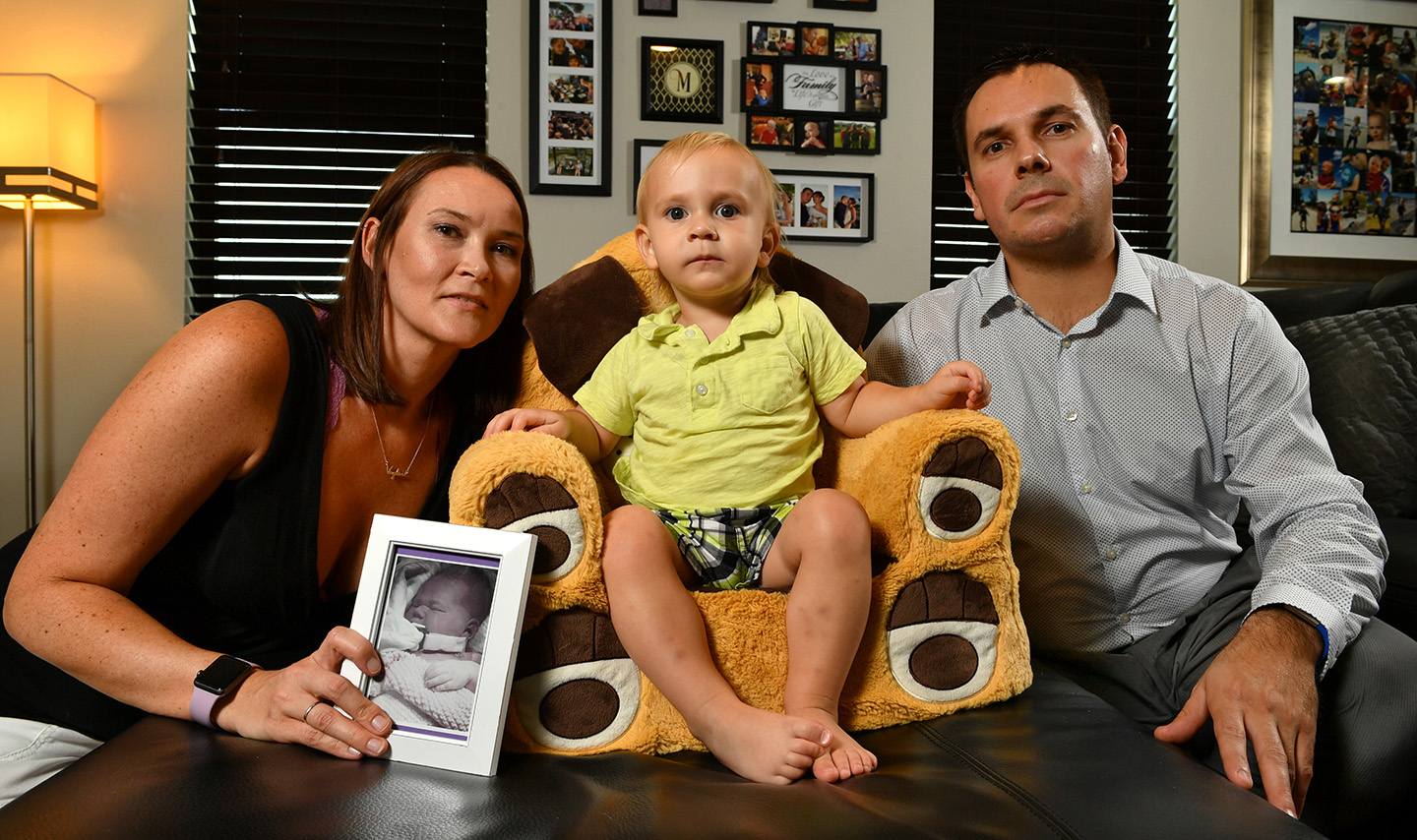
The family memorialized Vayden along the Tampa Riverwalk. A stone engraved with the words “Our Angel Forever” sits surrounded by the laughter of young children playing at the Glazer Museum nearby.
In July 2016, the Majewskis moved 45 minutes north to Gibsonton, buying a new, two-story home on a quiet family street.
Now a stay-at-home mom, Majewski had another child in February 2017.
They named him Zyler. Or Baby Z for short.
He was born at the hospital.
“It doesn’t matter how your baby comes out, as long as it is alive and well,” Majewski said. “Now, it’s a war between home births and hospitals, and we are so fixed on how we give birth. But at the end of the day, it doesn’t matter. The only thing that matters is the baby.
“I would give my legs to hold my baby in my arms today.”